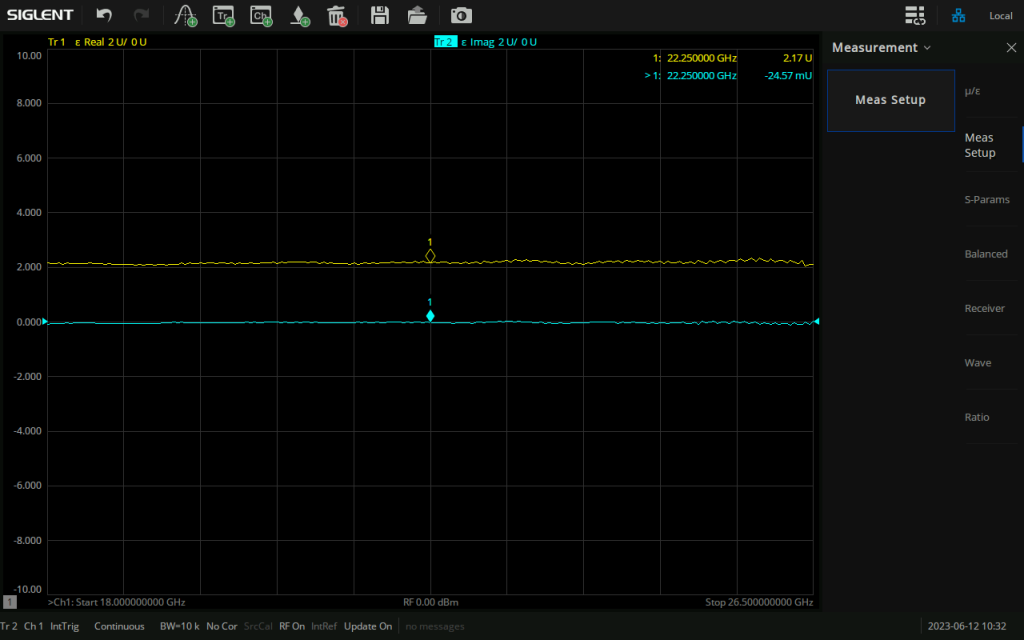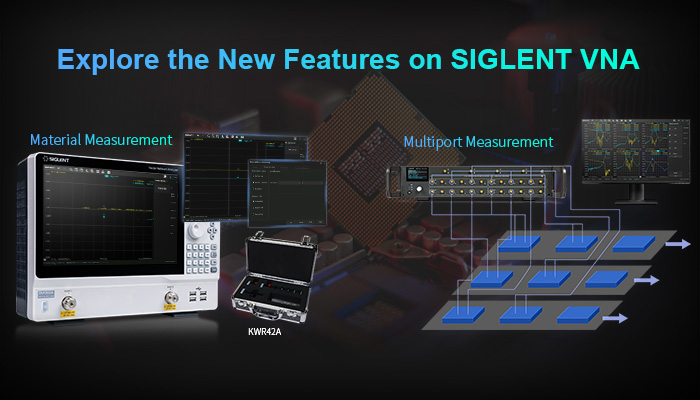Innovative Features Across the SNA Family
June 20, 2024
SIGLENT introduces innovative features to optimize the configuration of SNA family.
In today’s increasingly competitive world, reducing manufacturing costs while conducting rapid and comprehensive production test is the secret to enhance corporate competitiveness, and the key to minimizing costs is to optimize the configuration of existing vector network analyzer. June 20th 2024, SIGLENT introduces innovative features that extend power of SNA family to material test and multiport devices. The upgradability of SIGLENT VNA facilitates the selection of appropriate features to meet budget and measurement requirements, as well as extend longevity to keep your test assets current by upgrading firmware and adding new application software and technology.
Future-Proof Your Material Test
Material Test Challenges
Material measurement is integral when developing solutions in the millimeter-wave (mmWave) frequency range, it can provide the electrical or magnetic characteristics of the materials, which proved useful in many research and development fields. PCB, antenna, material science, microwave circuit design, biological research, and automotive engineers along with metrology and research institutes must characterize various materials to better understand their effects on electromagnetic wave propagation to achieve more expected designs, or to test manufacturing processes to control product quality, etc. Similar questions from different applications create a continual demand to accurately measure dielectric and magnetic properties of materials.
SNA Material Test Solutions
SIGLENT deliver a comprehensive material measurement solution ideal for lab, manufacture and university environments, including SNA series precision instruments, MT materials measurement software, KWR42A waveguide calibration kit. The SNA series network analyzer can automatically perform transmission/reflection line methods to measure the electrical permittivity and magnetic permeability of solid materials in the frequency range of 9kHz to 26.5GHz, with excellent measurement integrity and economic applicability.
The material under test is inserted in to a piece of transmission line/waveguide and the properties of the material are deduced on the basis of the reflection from the material and the transmission through the MUT. The principle behind the measurement is that the characteristic impedance of the piece of transmission line loaded with the sample is different from that of the transmission line without the sample. Users need to know the appropriate measurement and conversion methods for materials in order to measure its dielectric properties. If the wrong methods are used, the measurement results will not be satisfactory. The measurement wizard guides the user through the measurement process and the results can be plotted in a variety of formats .

Advanced Calibration
Besides the measurement and conversion methods, accuracy is also an important measurement standard. Accuracy depends on the calibration methods and the conversion method utilized. SIGLENT offers KWR42A waveguide calibration solution covering a frequency range of 18 GHz to 26.5 GHz, capable of conducting through-reflect-line (TRL) calibration. The method represents the most precise means of rectifying coaxial measurement errors, enabling the determination of all error components within the measurement device error model using three straightforward connection methods.

Extend the Power to Multiport Devices
Multiport Test Challenges
With the rapid development of mobile communication, microwave integrated circuit technology and the improvement of device performance requirements, the demand for reducing size, cost, weight and power consumption is pushing complex multi-port devices to replace discrete components. Many devices integrate multiple functions on a single component, such as FEM module of mobile phone, MIMO antenna and so on. The high integration of devices and the widespread application of wireless technology promote the mass production of general components (like antennas, filters, cables, etc.), creating the need for multi-port testing.
SNA Multiport Test Solutions
With the cost-effective multi-port expansion design concept, SIGLENT provides flexible and simple operation, calibration and configuration. SSM single unit can expand the output ports to 24 and can be easily integrated, greatly adapt to the automatic test system and production line scenarios. Whether differential devices, highly integrated multi-port devices or multiple single-port devices are measured, it can provide different multi-port test solutions according to users’ specific measurement needs, which significantly shortens the test time. The multi-port measurement capability of VNA can improve test throughput and thereby significantly reduce device test costs. Typical applications include design, verification and production of antenna, data converter interfaces, automatic test of RF components and other devices, etc.

Advanced Calibration
Calibrating multi-port VNA test system is more time-consuming and complicated than calibrating 2-port or 4-port VNA. Users can calibrate with electronic calibration kit or mechanical calibration kit, but it sounds very complicated to calibrate 10-port or 20-port with mechanical calibration kit. ECal is a very convenient calibration method, which greatly simplifies multi-port calibration while maintaining accuracy, and can replace traditional mechanical calibration kit to provide consistent calibration results and avoid human error. SIGLENT provides 2/4-port electronic calibration solution with frequency range of 9 kHz-26.5GHz. Keep one port of VNA and one port of ECal unchanged as a reference, all other ports can be connected to ECal once to characterize the characteristics of all ports. The S-parameter wizard can effectively guide users to complete calibration and ensure that all required port combinations are calibrated.


